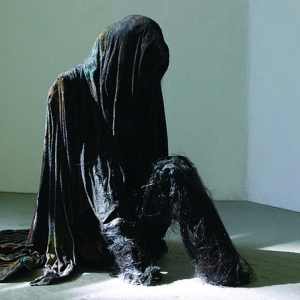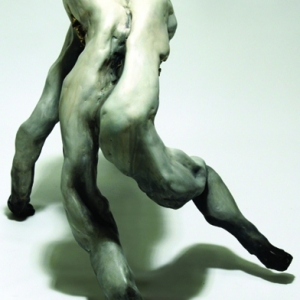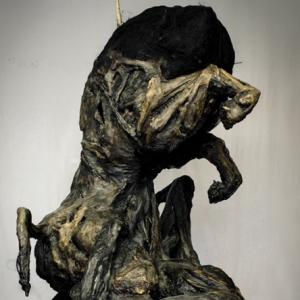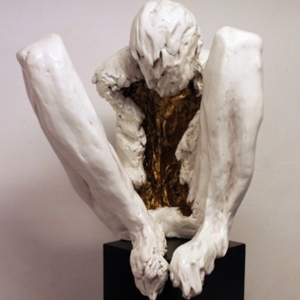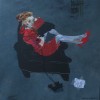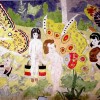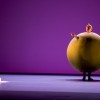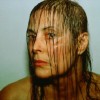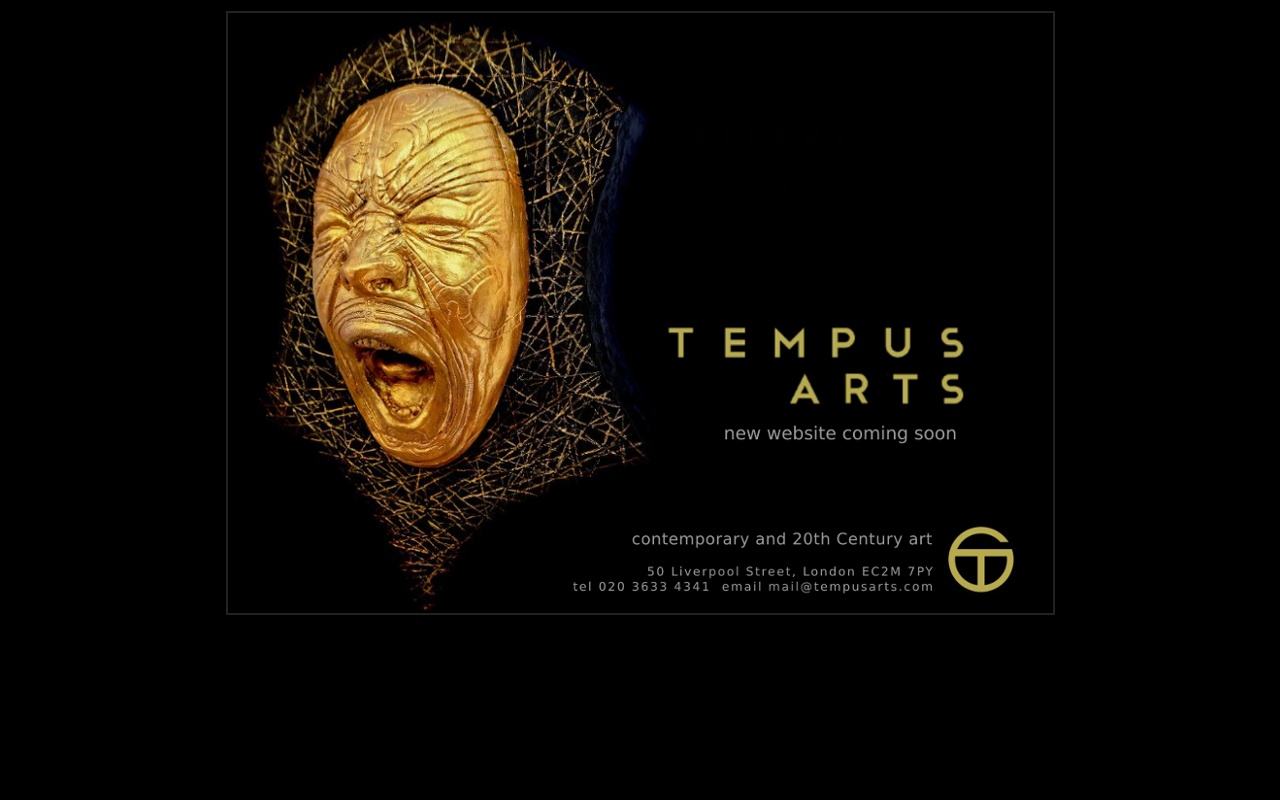Alexandra Leyre Mein’s sculptures are permeated with the strangeness of incomplete beings and suffering souls. We experience them as one of those peripheral visions that grace dreams. Entering her universe is like stepping into a world where Gabriel García Márquez meets Guy de Maupassant in an Edgar Allan Poe’s short story. Fantastic and surrealist literature influence her work in which crossbred and chimerical creatures are facing their inner struggles; duels in which the enemy is one’s self. In this violent encounter the fragmented body alternatively metamorphoses and decays, transforming new life form into strange and forlorn beauty.
In sculpture we tend to look for something whose shape we recognise, or which provokes emotions. Alexandra’s Pleureuses puts us in touch with the essence of emotion. This sculptural group was created in 2008, during the artist’s residency in New York. Plaster – the artist’s chosen material – allows plasticity by achieving rough and sleek textures. These mysterious silhouettes speak of the revolt of being, of loving and being rejected. Under the layers of black paint the artist’s writings are hidden, like secret litanies infusing life into the sculpture. Les Pleureuses are all wrapped up in themselves, looking within and murmuring secrets, whilst feasting on their own pain.
Unlike Les Pleureuses, The Observer looks directly at us. He resembles a Gothic gargoyle. The scale is wrong, the limbs too long with the arms missing. Yet the plaster becomes sleeker, outlining embryonic muscular shapes and introducing movement. The figure seems to be melting, embodying the artist’s love for paradox: ‘can a sculpture melt?’ In Battle II, sensual movement appears, echoing Bacon’s paintings through motions and contortions of the eerie animal figure.
Prior to moving to the United States, human face is strangely absent from Alexandra’s work. It is in 2012, when the Belgian artist moved to rural Hopewell, New Jersey that she started introducing human features in her sculpture. She explains ‘being surrounded by nature and solitude made me realise that human emotions are best expressed by their faces’. It is then that she started using hydro-stone, a material harder than regular plaster and better suited to representing movement. In her first bust, Vain, lines open up and motions burst out of a melting face which smirks mockingly at the viewer.
“The metamorphosis of human-animal hybrids reaches new heights in Lost Pleiad, a piece the missing Pleiad of the Taurus constellation, wife of Sisyphus embodying the ongoing struggle at the core of human nature.”
Alexandra’s creatures are unsettling but if one approaches them, one will see the beauty hidden beneath the folds of melting plaster. Life and death, identity and metamorphosis, body and mind are paramount themes in her work. As she develops her craft, a reflection on movement and the times we are living in appears. Her sculptures seem to observe the time that passes inexorably and comment on our epoch, in hushed voices, whilst we sleep.
Alexandra Leyre Mein is a Belgian artist, born in 1979. She lives between Hopewell and Brussels.
Her works form part of private collections in the US, Belgium, Germany and the Netherlands.

